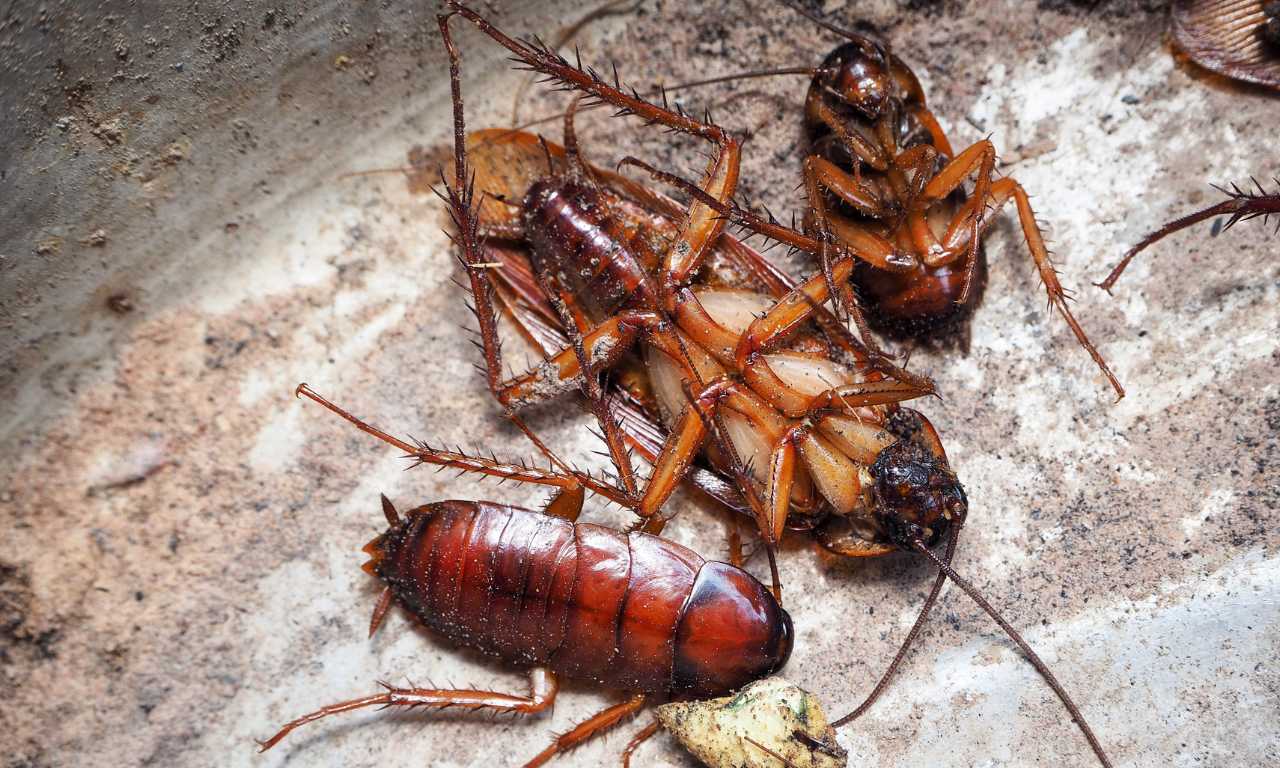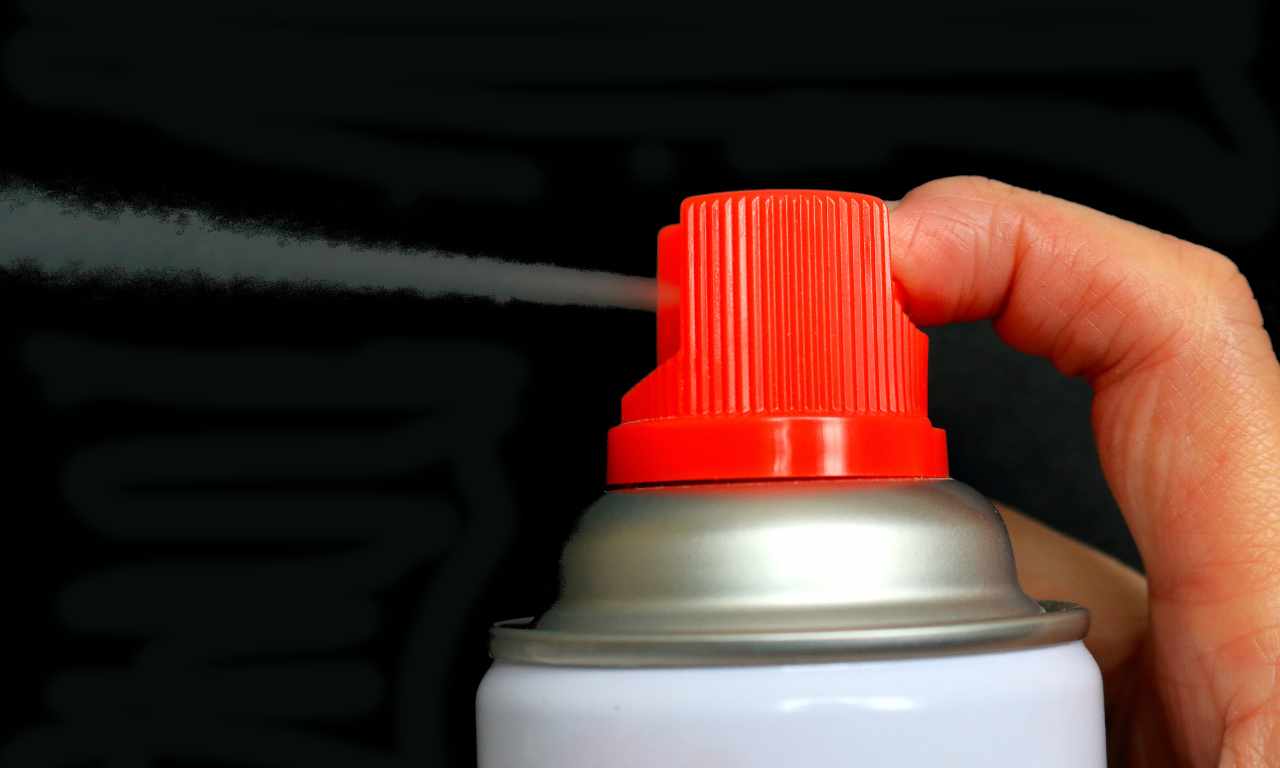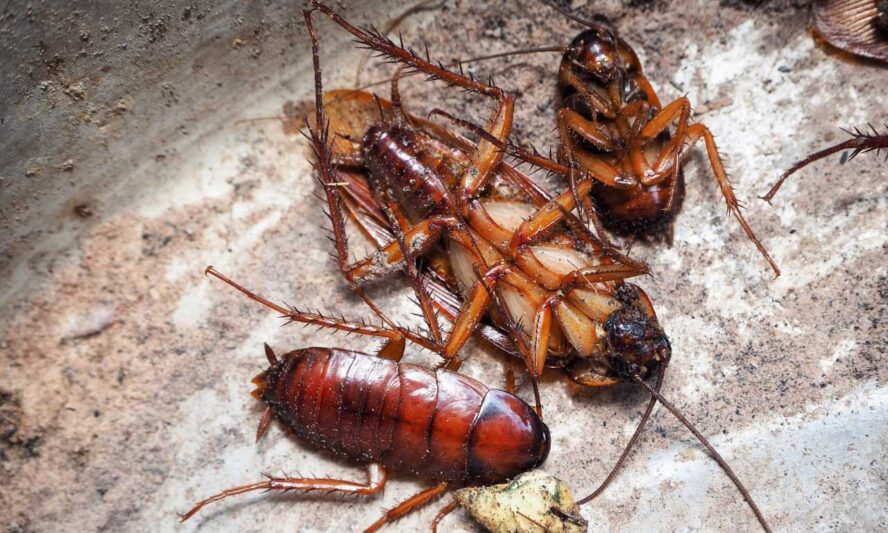 Determining if cockroaches are gone can be a challenging task, as they can be difficult to eliminate completely, especially if the infestation is severe. However, there are a few signs that you can look for to determine if the roaches have been successfully controlled or eradicated.
Determining if cockroaches are gone can be a challenging task, as they can be difficult to eliminate completely, especially if the infestation is severe. However, there are a few signs that you can look for to determine if the roaches have been successfully controlled or eradicated.
- Decreased Sightings: One of the most obvious signs that roaches are gone is a decrease in the number of roaches you see. If you have been seeing a large number of roaches and suddenly stop seeing them, it is a good indication that the population has been reduced.
- No Egg Cases: Cockroaches lay eggs in a protective casing called an ootheca. If you have been finding these egg cases and suddenly stop finding them, it is a sign that the population has been reduced or eliminated.
- No Fecal Droppings: Cockroaches leave behind dark, cylindrical droppings that are easy to spot. If you stop finding these droppings, it is a sign that the population has been reduced.
- No Musty Odor: Cockroaches emit a musty odor that can be detected when there is a large population present. If the odor suddenly disappears, it is a sign that the population has been reduced or eliminated.
- No Dead Cockroaches: Dead cockroaches are a sign that the population has been reduced, as they are usually the result of successful pest control measures. If you stop finding dead cockroaches, it is a sign that the population has been reduced or eliminated.
- No Damage: Cockroaches can cause significant damage to food packaging, books, and other items in your home. If you stop seeing this type of damage, it is a sign that the population has been reduced or eliminated.
- No Traps Caught: If you have been using traps to monitor the cockroach population, the absence of cockroaches in the traps is a sign that the population has been reduced or eliminated.
- No Nymphs: Cockroach nymphs are young, immature roaches that are smaller than adults. If you stop seeing nymphs, it is a sign that the population has been reduced or eliminated.
To ensure that cockroaches are gone, it is important to follow an integrated pest management (IPM) approach that includes a combination of chemical and non-chemical methods. The following steps can help you achieve this goal:
- Clean and Sanitize: Cockroaches are attracted to food and water sources, so it is important to clean and sanitize your home to eliminate these attractants. This includes cleaning up spills, storing food in sealed containers, and regularly washing dishes and wiping down countertops.
- Seal Cracks and Crevices: Cockroaches can enter your home through cracks and crevices in the walls, floors, and ceilings. It is important to locate and seal these entry points to prevent roaches from entering your home.
- Use Traps: Cockroach traps can help you monitor the population and determine if the roaches are gone. They work by attracting roaches with a bait and trapping them inside.
- Use Pesticides: Pesticides can be an effective tool in controlling and eliminating cockroach populations. However, it is important to use them properly and follow all label instructions to avoid potential harm to humans and pets.
- Keep Your Home Dry: Cockroaches thrive in moist environments, so it is important to keep your home as dry as possible. This includes fixing leaks and using a dehumidifier if necessary.
- Vacuum Regularly: Vacuuming can help remove cockroaches and their eggs from your home. Be sure to empty the vacuum bag after each use to prevent the cockroaches from escaping back into your home.
- Use Natural Repellents: Certain natural substances, such as bay leaves, cinnamon, and diatomaceous earth, can be used to repel cockroaches. These substances can be placed in areas where cockroaches are known to enter your home or in areas where you have seen them before.
- Call a Professional: If you have a severe infestation, it may be necessary to call a professional pest control company. A professional can provide more advanced pest control methods and products that can help you get rid of cockroaches once and for all.
What Happens If You Don’t See Cockroach For A Week?
If you don’t see cockroaches for a week, it could mean several things. Here are some possible explanations:
- The Cockroaches Have Moved: Cockroaches are notorious for hiding in dark, concealed areas, such as cracks and crevices, and coming out only at night. If you haven’t seen any cockroaches for a week, it could be because they have moved to a different location in your home.
- The Cockroaches Have Died: If you have taken steps to control the cockroach population, such as using pesticides, it is possible that the cockroaches have died. This is a good sign, but it is important to continue your control efforts to ensure that the population is completely eliminated.
- The Cockroaches Have Become Less Active: Cockroaches can become less active during periods of stress, such as when they are exposed to pesticides or when their food sources are limited. If you haven’t seen any cockroaches for a week, it could be because they have become less active and are hiding in the shadows.
- The Cockroaches Have Migrated: Cockroaches can migrate from one location to another in search of food and water. If you haven’t seen any cockroaches for a week, it could be because they have migrated to another part of your home or to a different location altogether.
- The Cockroaches Are Still Present, But Not as Active: Cockroaches can become less active during certain times of the year, such as in the winter when the temperature drops. If you haven’t seen any cockroaches for a week, it could be because they are still present but not as active.
Why Do You See Roaches Every Few Months?
If you see cockroaches every few months, it could be due to a number of reasons. Here are some possible explanations:
Poor Sanitation
 Poor sanitation refers to a lack of cleanliness and hygiene in a living or working environment. In the context of pest control, poor sanitation can contribute to the growth and spread of cockroach infestations. Cockroaches are attracted to food and water sources, and if a home or building is not properly cleaned and sanitized, it can provide a source of sustenance for the pests, allowing them to thrive and reproduce.
Poor sanitation refers to a lack of cleanliness and hygiene in a living or working environment. In the context of pest control, poor sanitation can contribute to the growth and spread of cockroach infestations. Cockroaches are attracted to food and water sources, and if a home or building is not properly cleaned and sanitized, it can provide a source of sustenance for the pests, allowing them to thrive and reproduce.
Here are some common examples of poor sanitation that can contribute to cockroach infestations:
- Food and Drink Spills: Food and drink spills can attract cockroaches to your home and provide them with a food source. It is important to clean up spills as soon as they occur and store food in sealed containers to prevent cockroaches from accessing it.
- Dirty Dishes: Dirty dishes in the sink or left on countertops can provide cockroaches with a source of food and water. It is important to wash dishes regularly and store them in a sealed cabinet or dishwasher to prevent cockroaches from accessing them.
- Clutter: Cluttered areas, such as storage rooms and garages, can provide cockroaches with hiding places and can make it more difficult to clean and sanitize the space. It is important to keep these areas organized and free of clutter to prevent cockroaches from thriving.
- Improper Garbage Disposal: Improper garbage disposal can provide cockroaches with a source of food and a place to hide. It is important to regularly take out the garbage, store it in a sealed container, and dispose of it in a designated area.
- Lack of Ventilation: Lack of ventilation can create moist and humid environments that are ideal for cockroaches to thrive in. It is important to ensure proper ventilation in your home or building, such as using exhaust fans in the kitchen and bathroom, to prevent cockroaches from thriving.
- Unsanitary Pet Areas: Pets can attract cockroaches to your home and provide them with a source of food and water. It is important to clean and sanitize pet areas regularly, store pet food in sealed containers, and wash pet dishes regularly to prevent cockroaches from accessing them.
In order to prevent cockroach infestations, it is important to maintain a clean and sanitary living or working environment. This includes regularly cleaning up spills, storing food in sealed containers, washing dishes and wiping down countertops, and keeping areas organized and free of clutter.
Additionally, it is important to regularly take out the garbage, store it in a sealed container, and dispose of it in a designated area. By implementing good sanitation practices, you can reduce the risk of cockroach infestations and ensure a healthy and pest-free environment.
Access To Your Home
Access to your home refers to the points at which pests, such as cockroaches, can enter and take up residence inside. Understanding these access points is important in preventing cockroach infestations and controlling existing ones.
Here are some common access points for cockroaches:
- Doors and Windows: Cockroaches can enter your home through gaps around doors and windows. It is important to inspect these areas regularly and caulk any gaps or cracks to prevent cockroaches from entering.
- Utilities and Pipes: Cockroaches can enter your home through pipes and utilities, such as plumbing and electrical lines. It is important to ensure that pipes and utilities are properly sealed to prevent cockroaches from entering.
- Vents and Chimneys: Cockroaches can enter your home through vents and chimneys, especially if they are not properly screened. It is important to install screens over vents and chimneys to prevent cockroaches from entering.
- Openings in the Foundation: Cockroaches can enter your home through gaps or cracks in the foundation. It is important to inspect your home’s foundation regularly and repair any gaps or cracks to prevent cockroaches from entering.
- Gaps Around Appliances: Cockroaches can enter your home through gaps around appliances, such as refrigerators, stoves, and dishwashers. It is important to inspect these areas regularly and caulk any gaps to prevent cockroaches from entering.
- Delivery Packages and Bags: Cockroaches can hitch a ride into your home on delivery packages and bags. It is important to inspect packages and bags before bringing them inside and to store them in a sealed area to prevent cockroaches from accessing them.
- Used Furniture: Cockroaches can hide inside used furniture and enter your home when the furniture is brought inside. It is important to inspect used furniture before bringing it inside and to treat it with a pest control product to prevent cockroaches from taking up residence inside.
In order to prevent cockroach infestations and control existing ones, it is important to regularly inspect your home for access points and take steps to prevent pests from entering. This includes caulk gaps and cracks around doors and windows, sealing pipes and utilities, installing screens over.
Poor Pest Control Practices
 Poor pest control practices refer to ineffective or inadequate methods of preventing and controlling pest infestations, such as cockroaches. These practices can contribute to the growth and spread of cockroach populations, making it difficult to eliminate the pests from a home or building.
Poor pest control practices refer to ineffective or inadequate methods of preventing and controlling pest infestations, such as cockroaches. These practices can contribute to the growth and spread of cockroach populations, making it difficult to eliminate the pests from a home or building.
Here are some common examples of poor pest control practices:
- Not Identifying the Pest: Poor pest control practices often begin with not properly identifying the pest. Cockroaches have many different species, and each species may require a different control method. It is important to properly identify the type of cockroach you are dealing with in order to implement an effective control strategy.
- Improper Use of Pesticides: Improper use of pesticides can result in ineffective pest control and can also pose a risk to human health. It is important to follow the instructions on the label of the pesticide and to use the correct amount and application method to prevent cockroaches from becoming resistant to the pesticide.
- Inadequate Sanitation: Sanitation plays a crucial role in preventing and controlling cockroach infestations. Poor sanitation practices can provide cockroaches with a source of food and water, allowing them to thrive. It is important to implement good sanitation practices to prevent cockroaches from taking up residence in your home or building.
- Failure to Treat the Source of the Infestation: Cockroaches can hide in hard-to-reach areas and can be difficult to control. To effectively eliminate an infestation, it is important to treat the source of the infestation, such as cracks and crevices in the walls, as well as the visible pests.
- Not Monitoring the Infestation: Regular monitoring of the infestation is important in order to track its progress and determine if additional control measures are needed. Without monitoring, it can be difficult to determine if the pest control methods are working and to make adjustments as needed.
- Relying on a Single Control Method: Relying on a single control method, such as a pesticide, can lead to ineffective pest control. It is important to use a combination of control methods, including sanitation, exclusion, and pesticide treatments, to effectively eliminate a cockroach infestation.
- Neglecting to Seal Access Points: Cockroaches can enter your home through gaps and cracks in the walls, windows, and doors. To prevent cockroaches from entering, it is important to regularly inspect your home for access points and to seal any gaps or cracks.
In order to effectively control cockroach infestations and prevent their reoccurrence, it is important to implement good pest control practices. This includes properly identifying the pest, using the correct amount and application method of pesticides, implementing good sanitation practices, treating the source of the infestation, monitoring the infestation regularly, using a combination of control methods, and sealing access points. By following these best practices, you can effectively eliminate cockroach infestations and prevent them from reoccurring in the future.
Presence Of Moisture
Moisture is a critical factor in the survival and growth of many pests, including cockroaches. Cockroaches are attracted to moist environments because they need water to survive. The presence of moisture in a home or building can create ideal conditions for cockroaches to thrive, leading to a cockroach infestation.
Here are some ways that moisture can contribute to a cockroach infestation:
- Water Sources: Cockroaches require a source of water to survive. If a home or building has a moisture problem, such as a leaky pipe or faucet, this can provide a constant source of water for cockroaches. Cockroaches are also attracted to areas where water accumulates, such as under sinks, near refrigerators, and in bathroom and kitchen areas.
- High Humidity: High humidity levels can create ideal conditions for cockroaches to thrive. Cockroaches are attracted to moist environments, and high humidity can increase the likelihood of moisture buildup in a home or building. High humidity levels can also cause structural damage to a building, creating cracks and crevices that cockroaches can use as access points.
- Damp Basements and Crawl Spaces: Damp basements and crawl spaces can provide a perfect environment for cockroaches. These areas are often poorly ventilated, which can lead to high humidity levels and moisture buildup. Cockroaches can also use these areas as a place to hide and breed, making it difficult to control the infestation.
- Clogged Gutters and Drainpipes: Clogged gutters and drainpipes can cause water to accumulate near a building, providing a source of moisture for cockroaches. Cockroaches are also attracted to the organic matter that accumulates in clogged gutters and drainpipes, providing them with a source of food.
- Poor Ventilation: Poor ventilation can increase the likelihood of moisture buildup in a home or building. Cockroaches are attracted to moist environments, and poor ventilation can create ideal conditions for them to thrive. In addition, poor ventilation can also contribute to the growth of mold and mildew, which can provide a food source for cockroaches.
To prevent and control cockroach infestations, it is important to address the presence of moisture in a home or building. This can include fixing leaky pipes and faucets, improving ventilation, and using dehumidifiers to reduce humidity levels.
Regular cleaning and maintenance can also help to prevent moisture buildup and reduce the likelihood of cockroach infestations. In addition, it is important to keep gutters and drainpipes clear to prevent water from accumulating near a building.
Welcome to my blog. I have been doing pest control for years since my house, garden and pets were always attacked by various kinds of pests and as a result I had to know proper pest control techniques that works. In this blog I share all the tips and tricks that I know and I hope you’ll find it helpful.

